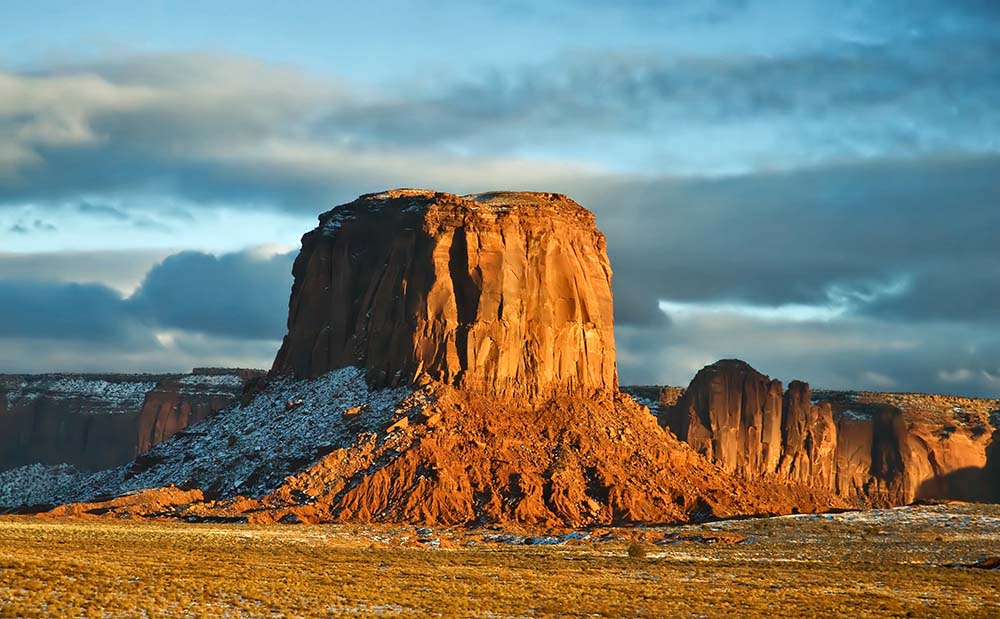

Humans investigate megalithic monuments (sites) as if doorways to the past that might lead them to understand who they are, how they got here, and what comes next. They are associated with mythology and ancient aliens which are one and the same. They are generally found on major planetary grid points - often indwells and out wells of energy or perhaps portals.
A monolith is a geological feature consisting of a single massive stone or rock, such as some mountains, or a single large piece of rock placed as, or within, a monument or building. Erosion usually exposes the geological formations, which are often made of very hard and solid igneous or metamorphic rock.
In architecture, the term has considerable overlap with megalith, which is normally used for prehistory, and may be used in the contexts of rock-cut architecture that remains attached to solid rock, as in monolithic church, or for exceptionally large stones such as obelisks, statues, monolithic columns or large architraves, that may have been moved a considerable distance after quarrying. It may also be used of large glacial erratics moved by natural forces. The word monolith derives from the latin word 'monolithus' and the Greek word 'monolithos', derived from 'one' or 'lonely' and 'stone'. There are natural and manmade monoliths. They are found throughout the planet, under water and in space. Continue reading
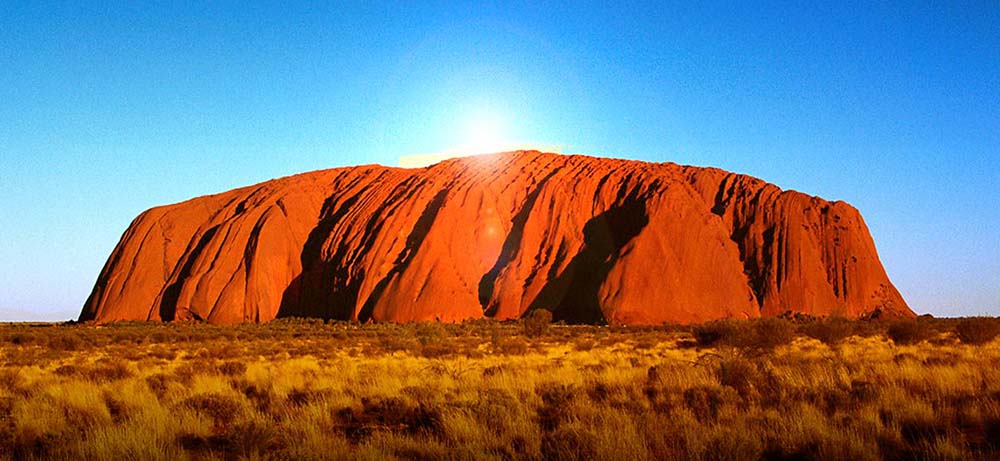
Ayers Rock - Uluru
- UluruAyers Rock is the world's largest monolith rising 318m above the desert floor with a circumference of 8km. Depending on the time of day and the atmospheric conditions the rock can dramatically change color - blue red, purple ...
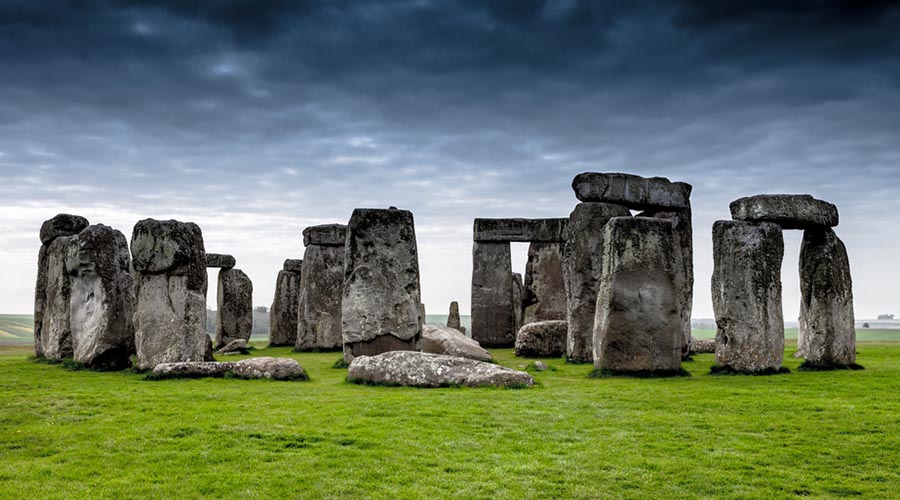
Standing stones, orthostats, liths, or more commonly megaliths (because of their large and cumbersome size) are solitary stones set vertically in the ground and come in many different varieties. Standing stones are usually difficult to date, but pottery found underneath some in Atlantic Europe connects them with the Beaker people; others in the region appear to be earlier or later however. Where they appear in groups together, often in a circular, oval, henge or horseshoe formation, they are sometimes called megalithic monuments. These are sites of ancient religious ceremonies, sometimes containing burial chambers. Read more
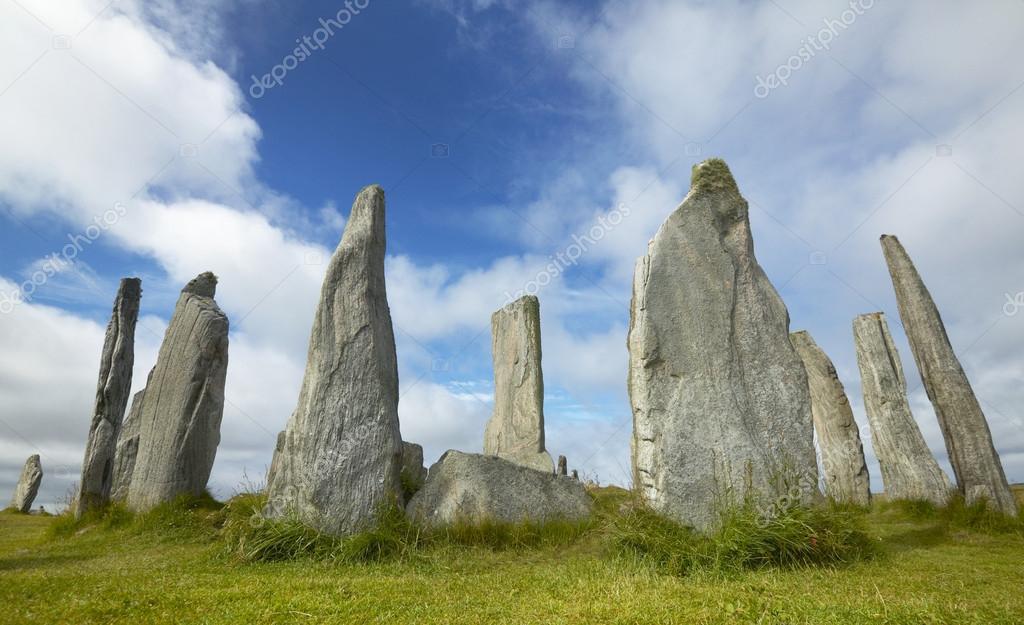
Giant Megalithic Complex of 500 Standing Stones in southern Spain Is Among The Largest in Europe
Science Alert - August 18, 2022
A huge megalithic complex of more than 500 standing stones has been discovered in southern Spain which could be one of the largest in Europe. The stones were discovered on a plot of land in Huelva, a province which flanks the southernmost part of Spain's border with Portugal, near the Guadiana River.
Spanning some 600 hectares (1,500 acres), the land had been earmarked for an avocado planation. But before granting the permit, the regional authorities requested a survey in light of the site's possible archaeological significance - and revealed the presence of the stones.
It is likely that the oldest standing stones at the La Torre-La Janera site were erected during the second half of the sixth or fifth millennium BCE. At the site, they found a large number of various types of megaliths, including standing stones, dolmens, mounds, coffin-like stone boxes called cists, and various enclosures.
Ethiopian monuments 1,000 years older than previously thought PhysOrg - December 10, 2021
Rising as high as 20 feet, ancient stone monoliths in southern Ethiopia are 1,000 years older than scientists previously thought, according to a new study in the Journal of African Archaeology. A Washington State University research team used advanced radiocarbon dating to determine the often phallic-shaped monoliths, or stelae, at the Sakaro Sodo archeological site in Ethiopia's Gedeo zone were likely created sometime during the first century A.D.
The only other attempt to determine the age of the more than 10,000 stele monoliths located at various sites in the Gedeo zone was conducted by French scientists in the 1990s. It provided a far more modest construction date of around 1100 A.D. for the monuments of Tuto Fela in the northern part of Gedeo. Under consideration as a UNESCO World Heritage Site, Sakaro Sodo and other archeological sites in the Gedeo zone have the largest number and highest concentration of megalithic stele monuments in Africa. The standing stones range widely in size, function, and arrangement in the landscape. While many of the monoliths have fallen and/or are undecorated, a few have intricately wrought faces and other anthropomorphic designs carved into the stone that can be seen today. Despite the impressive nature of the archeological site, little is known about why or how the monoliths were built.
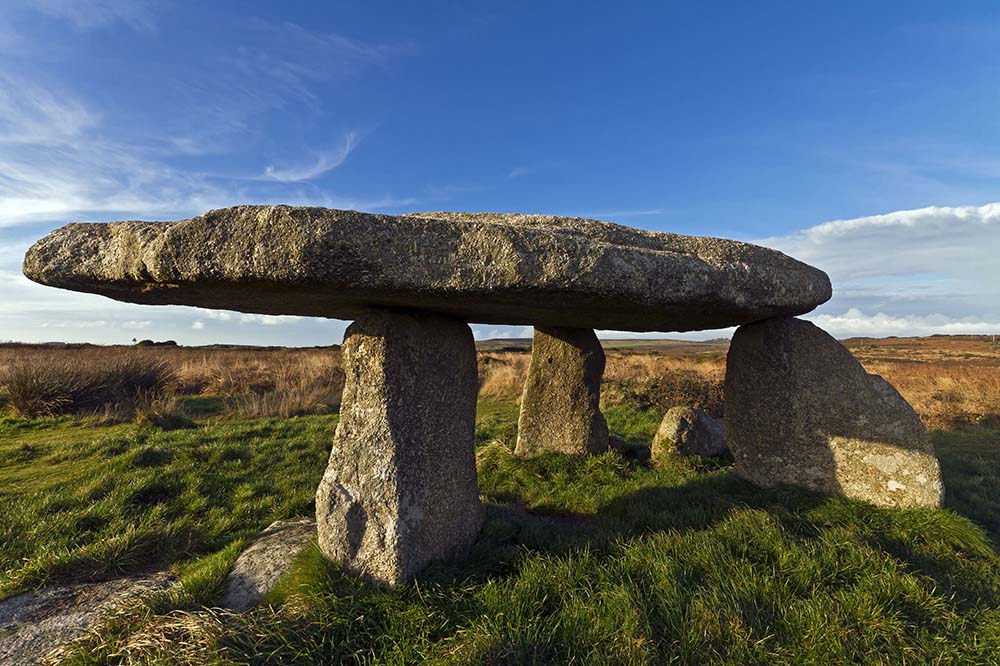
A Dolmen is a type of single-chamber megalithic tomb, usually consisting of two or more vertical megaliths supporting a large flat horizontal capstone or "table". Most date from the early Neolithic (4000-3000 BC) and were sometimes covered with earth or smaller stones to form a tumulus. Small pad-stones may be wedged between the cap and supporting stones to achieve a level appearance In many instances, the covering has weathered away, leaving only the stone "skeleton" of the mound intact.
It remains unclear when, why and by whom the earliest dolmens were made. The oldest known are found in Western Europe, dating from c 7,000 years ago. Archaeologists still do not know who erected these dolmens, which makes it difficult to know why they did it. They are generally all regarded as tombs or burial chambers, despite the absence of clear evidence for this. Human remains, sometimes accompanied by artifacts, have been found in or close to the dolmens which could be scientifically dated using radiocarbon dating. However, it has been impossible to prove that these remains date from the time when the stones were originally set in place. Read more
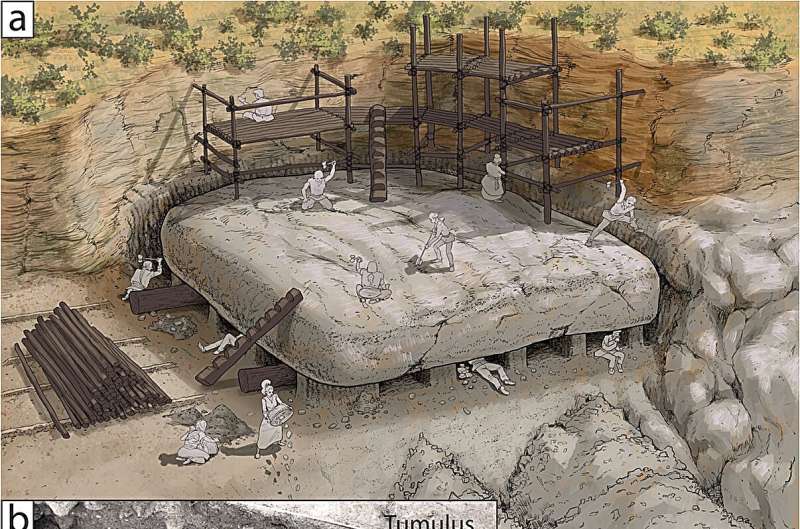
Closer look at the Menga dolmen shows it was one of the greatest engineering feats of the Neolithic PhysOrg - December 5, 2023
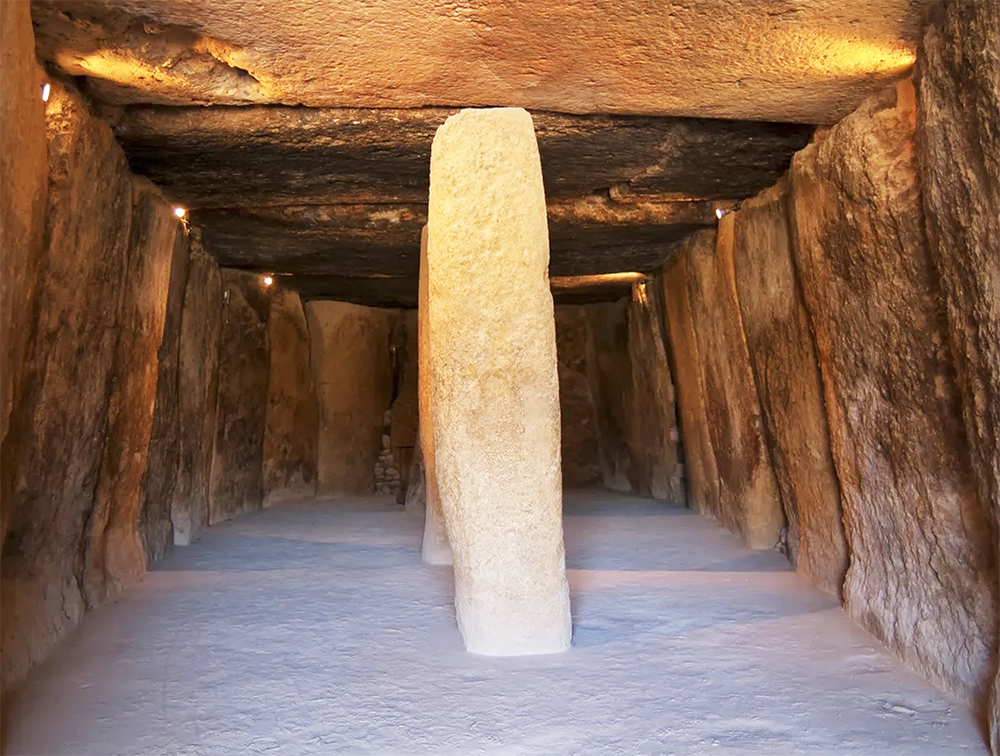
Colossal Prehistoric Tomb Was Greatest Engineering Feat Of The Stone Age IFL Science - December 5, 2023
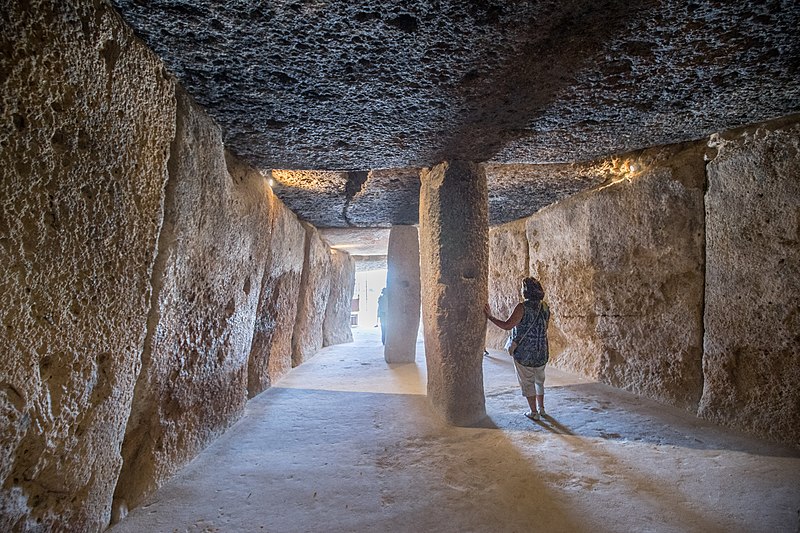
Dolmen of Menga in Spain Wikipedia
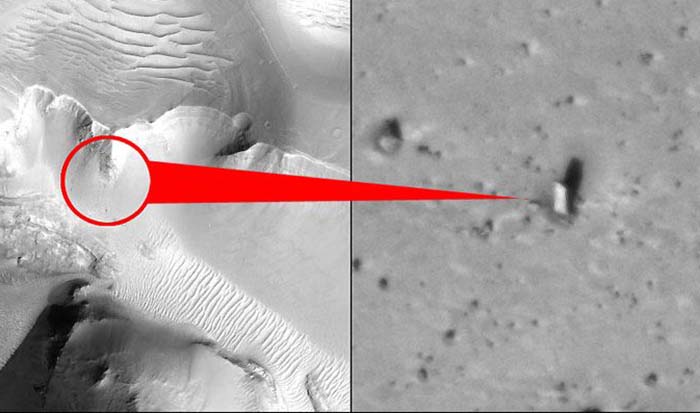
'Monolith' Object on Mars? You Could Call It That
Amateur stargazers have discovered an intriguing object jutting out from the surface of Mars. The seemingly perfectly rectangular, upright structure, found in NASA images of the Red Planet, bears a striking resemblance to the monoliths planted on Earth and the moon by aliens in the classic sci-fi film "2001: A Space Odyssey."
The object in question was first spotted several years ago after being photographed by the HiRISE camera onboard the Mars Reconnaissance Orbiter, a NASA space probe; every so often, it garners renewed interest on the Internet. But is it unnatural - a beacon erected by aliens for mysterious reasons, and even more mysteriously paralleled in the imaginations of Stanley Kubrick and Arthur C. Clarke, creators of "2001"? Or is this rock the work of nature?
According to Jonathon Hill, a research technician and mission planner at the Mars Space Flight Facility at Arizona State University, who processes many of the images taken during NASA's Mars missions, the object in question is no more than a roughly rectangular boulder.
The HiRISE camera that photographed it has a resolution of approximately 1 foot (30 centimeters) per pixel -impressive considering the 180-mile (300-kilometer) altitude from which it photographs the Martian surface, but not quite sharp enough to capture the cragginess of a mid-size boulder. "When your resolution is too low to fully resolve an object, it tends to look rectangular because the pixels in the image are squares.
The location of the boulder at the bottom of a cliff near many other boulders suggests it broke off the cliff and tumbled to its current spot sometime in the distant past, Hill said. Such a perilous location is itself an argument against deliberate placement by aliens: "If I was going to build a monolith somewhere, that's the last place I would put it!" he said. "The debris falling from the cliff would cover it up pretty quickly, on geologic timescales."
Hill added that the height of the boulder is being exaggerated in the photo by a low sun angle. Photographed when the sun was near the horizon, the boulder casts an especially long shadow.
The ufologists aren't necessarily wrong in calling it a monolith - the word simply translates from Latin as "one stone." But this monolith isn't the masonry of Martians.
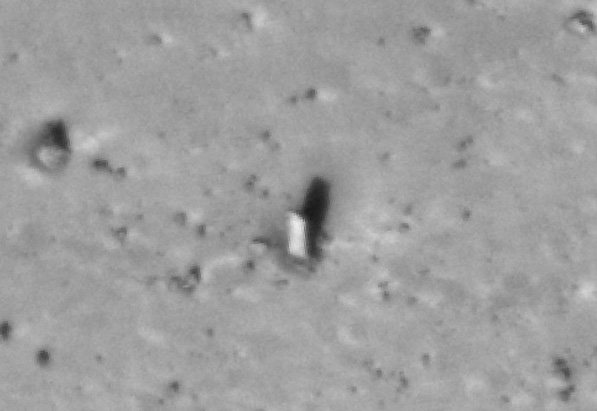
The Mars monolith is a rectangular object (possibly a boulder) discovered on the surface of Mars. It is located near the bottom of a cliff, from which it likely fell. The Mars Reconnaissance Orbiter took pictures of it from orbit, roughly 180 miles (300 km) away. Around the same time, the Phobos monolith made international news.
The best-known cultural reference is to the Monolith from 2001: A Space Odyssey (film) by Arthur C. Clarke and Stanley Kubrick. In the series, the Monoliths are black ebon and transparent oblong slabs, fitting exactly into the ratio 1:4:9 (9 height, 4 width and 1 depth). They form part of a Solar-System-wide computer network planted by an alien civilization to monitor an experiment which culminated in humanity.

Monolith - 2001 A Space Odyssey
Creation - Thus Spoke Zarathustra - Eclipse - Crystalinks' Blog
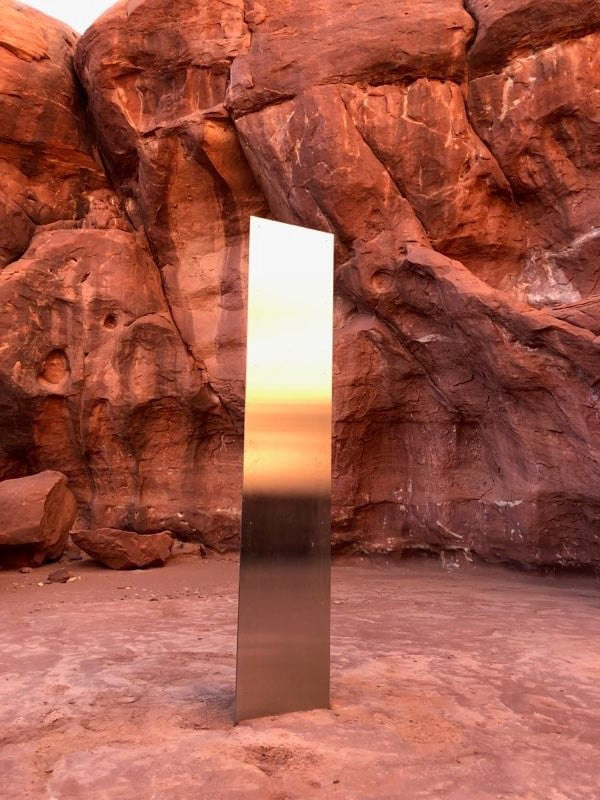
2020 Metal Monoliths, Symbolism
Utah, Romania, California, Isle of Wight, Turkey, Columbia, Netherlands, More
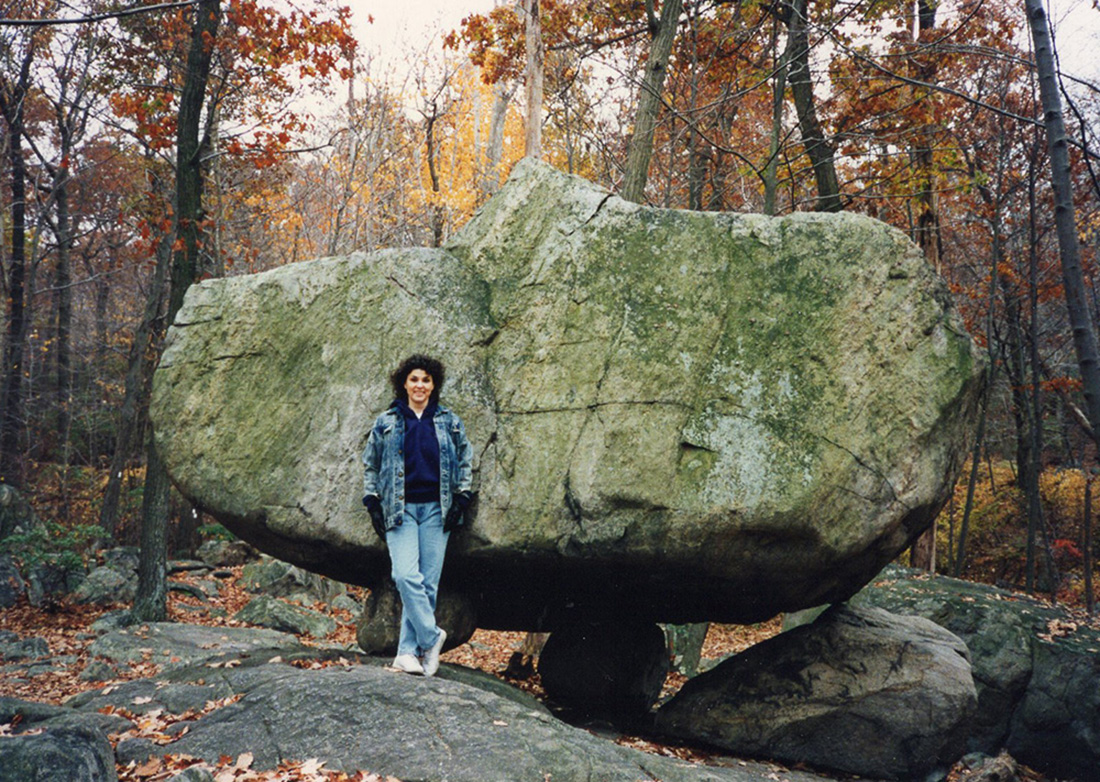
1994 Ellie's Megalithic Adventures in Upstate New York and New England
2020 - Balanced Rock Falls - Could Be Precursor to Earthquake
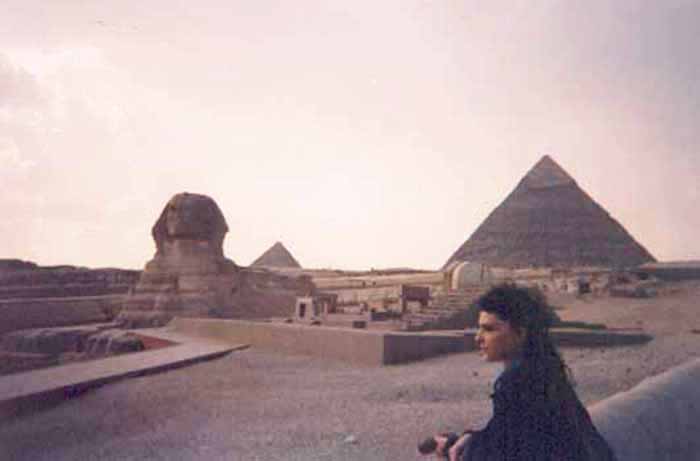
Ellie sitting on the base of the obelisk in the park across from her home.

